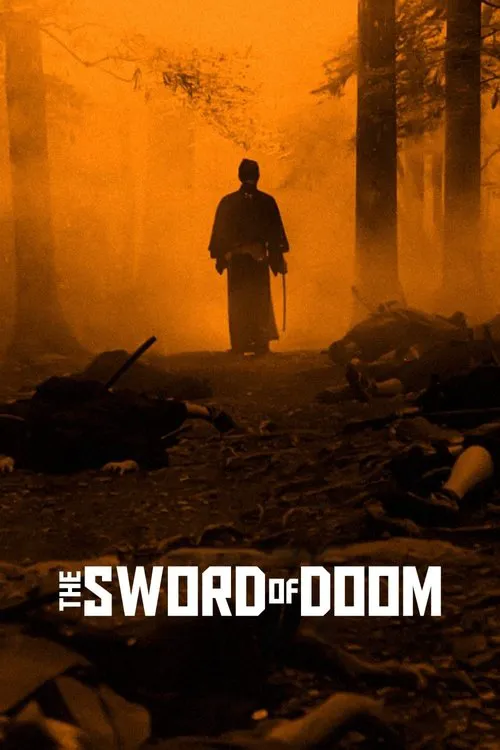The Sword of Doom

Plot
In feudal Japan, a nation on the brink of chaos, the once mighty Shogunate has begun to crumble. Amidst this tumultuous backdrop, a skilled yet ruthless swordsman emerges, his name Ryunosuke Tsukue. As a master of the katana, Ryunosuke is feared and respected in equal measure by his peers, who see him as a force of nature. However, beneath his stoic and calculating exterior, Ryunosuke is a man consumed by an insatiable hunger for violence and bloodshed. He moves through the land, a solitary figure, leaving a trail of death and destruction in his wake. There is no quarter asked or given in his brutal code of honor, no room for mercy or compassion. His enemies are dispatched with swift and merciless efficiency, their lives extinguished in an instant by the sword of doom that bears his name. As we follow Ryunosuke on his bloody odyssey, it becomes clear that his actions are driven by a profound sense of despair and disillusionment. A society in disarray, plagued by corruption and decay, has produced a man who is both its product and its most extreme manifestation. Ryunosuke's nihilistic worldview is a direct response to the moral vacuum at the heart of Japan's crisis-ridden culture. The film is notable for its unflinching portrayal of the horrors of war and the dehumanizing effects of unchecked violence. Ryunosuke's actions are not motivated by a desire for justice or a sense of righteousness, but rather by a need for release, a way to momentarily escape the crushing bleakness of his existence. Through Ryunosuke's character, director Kihachi Okamoto presents a searing critique of the Shogunate's crumbling institutions and the societal norms that have spawned such a monster. By depicting a man who has been shaped by the violent circumstances of his time, Okamoto shines a harsh light on the darker aspects of human nature and the destructive potential of unchecked ego and ambition. One of the most striking aspects of Ryunosuke's character is his detachment from the world around him. A man with no moral code, he sees himself as an instrument of fate, a mere puppet forced to dance to the tune of a merciless universe. His emotional landscape is barren and desolate, devoid of the warmth and connection that might temper his violent impulses. Ryunosuke's relationships with others are accordingly fleeting and superficial. He operates in a world of solitary encounters, his interactions with others characterized by a cold calculation that is at once repellent and pitiable. His closest allies are a group of fellow ronin, men who share his nihilistic worldview and accept his brutal code of honor without question. As we witness Ryunosuke's downward spiral into madness, we are reminded that his actions are a direct consequence of the society that has spawned him. The film is a powerful indictment of the Shogunate's failed institutions and the empty, soulless culture that has arisen in their wake. By depicting a world devoid of compassion or empathy, Okamoto presents a vision of human nature that is both terrifying and profoundly sad. Ultimately, Ryunosuke's story is a tragic one, a cautionary tale about the devastating consequences of unchecked violence and the destructive power of nihilism. As a work of cinema, The Sword of Doom is a masterclass in restraint and subtlety, a film that tells its story with a minimum of fuss and fanfare, relying on the sheer weight of its protagonist's actions and the stark, unvarnished beauty of its cinematography.
Reviews
Recommendations




